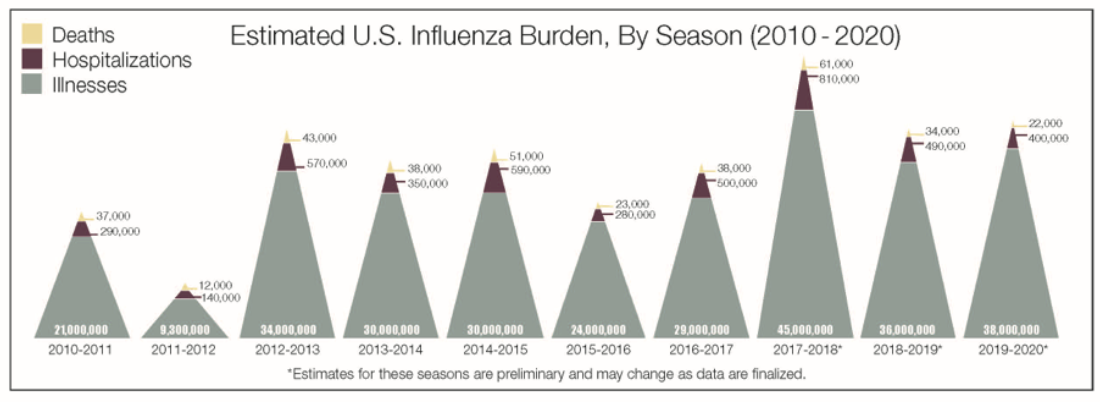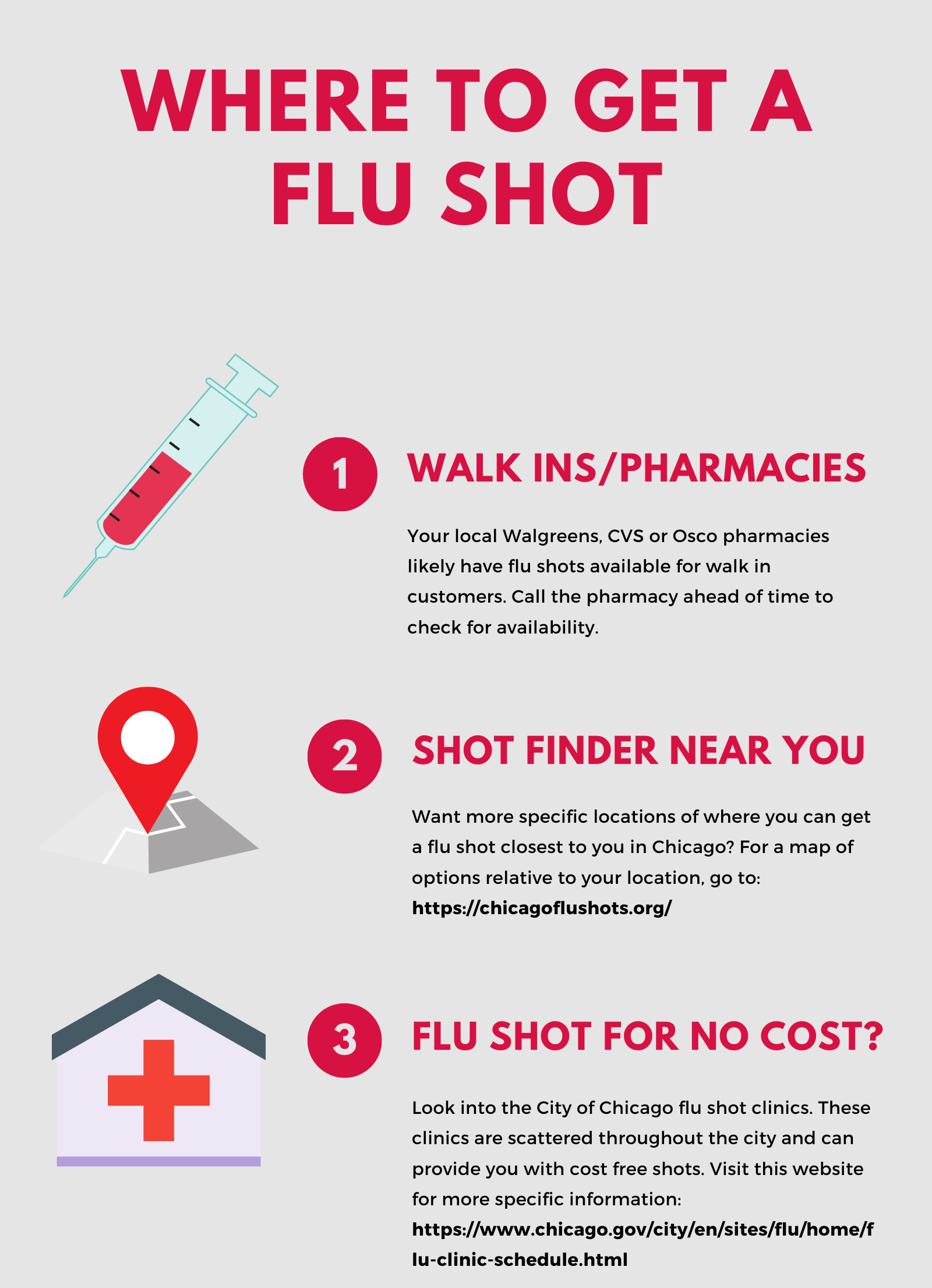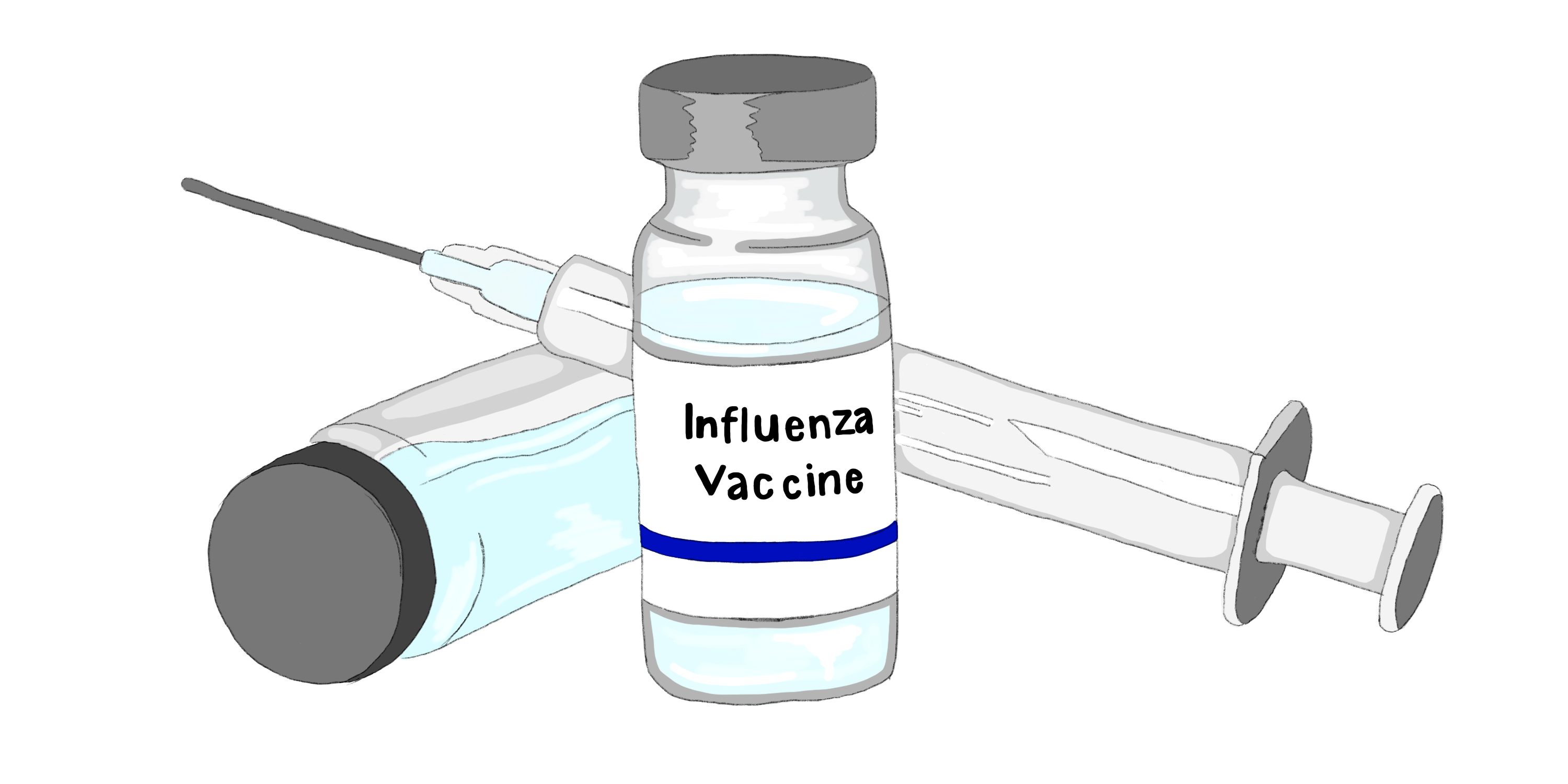Influenza season is just about to begin, and with the COVID-19 pandemic among us, getting a flu shot could alleviate the stress put on our healthcare system.
According to the Centers for Disease Control and Prevention (CDC), the flu has hit the United States year after year with case numbers consistently above 30 million since 2012-13. For 2019-20, the CDC projected there were approximately 38 million cases, 400,000 hospitalizations and 22,000 deaths due to the flu.

Courtesy of the Centers for Disease Control
These large case numbers and hospitalizations due to the flu can take up resources that are needed to combat the COVID-19 pandemic. The pandemic is coming back in yet another surge, meaning these resources are going to be needed more than ever amid the traditional flu season. According to the New York Times, the number of COVID-19 cases has risen by 54 percent in the last fourteen days.
“The main reason a flu shot is so much more important this year is to prevent us from overwhelming the healthcare system,” said Craig Klugman, health sciences professor at DePaul University. “Imagine if everyone with ‘flu-like’ symptoms needed to have both a flu and COVID test. We already have supply problems for COVID tests and labs have periods where they are backed up in analyzing and returning results.”
Let’s take a gander back to what life was like back when COVID-19 first became widespread in the United States in March: people were rushing to find masks and hospitals were significantly lacking in access to their own personal protection equipment. On top of this, hospitals did not have enough ventilators to accommodate the influx of COVID-19 patients. These resource availability issues are still occurring as some hospitals are facing problems finding space for patients along with resources such as ventilators.
“Since it is possible for someone to get the flu and COVID-19, we want to encourage people to get the flu shot to help decrease the chances of being overwhelmed with both viruses as we know that each can lead to serious illness, medical complications and even death,” said Dr. Tamara Lim, medical director and senior vice president of quality and clinical experience at Aunt Martha’s Health and Wellness, a nonprofit health center.
According to the CDC, the flu was relatively quiet in several countries with opposite flu seasons as the United States. Countries in the southern hemisphere had a calmer flu season, as their flu season occurs in opposite months of the year than the northern hemisphere.The decrease in the spread of the flu in the southern hemisphere was due to the use of PPE to prevent the spread of COVID-19, as both illnesses are spread in a similar fashion. It is hoped that the United States will have a mild flu season as well.
“Flu and COVID spread the same way,” Klugman said. “The things we are supposed to do to prevent COVID — wear face coverings, physically distance and wash hands frequently — are the same things that also help prevent the spread of flu except with flu there is a current, safe, effective vaccine that we should also get.”

How can I get a flu shot?
There are several ways to go about getting a flu shot. Many pharmacies such as Walgreens and CVS offer flu shots on a walk-in or call ahead basis, though it is recommended to call the location before arriving to see if they have availability.
Let’s be honest –– healthcare, even flu shots, can be expensive and not easily accessible to all. Clinics are not always distributed well across the city and even if they are, it can be difficult to get to clinics while they are open during traditional business hours. There are several ways to try to get around that barrier.
One way to get a flu shot at no cost is to look into the City of Chicago flu shot clinics. These are scattered throughout the city and still have a few dates left to participate. Check their website for a full list of flu shot clinics.
This program to offer no-cost vaccines to uninsured children and adults started back in 1993, when Chicago underwent a large measles outbreak. The service is provided through a partnership between the Chicago Department of Public Health and Blue Cross and Blue Shield of Illinois.
“During 2019, this partnership allowed CDPH to hold 308 community-based immunization clinics in 162 locations, totaling 7,352 vaccination encounters with 11,237 vaccine doses administered,” a City of Chicago press release said.
“We know immunizations like the flu shot are a key component to maintaining and improving community health – especially during this pandemic,” said Harmony Harrington, vice president of government and community relations for Blue Cross and Blue Shield of Illinois (BCBSIL), in a press release. “We’re grateful for the partnership with the Chicago Department of Public Health that lets our CareVan bring needed interventions directly to where they are needed most.”
The BCBSIL CareVan is an outreach initiative that was established to provide health services across the state. These services include community outreach, vaccinations, COVID-19 testing, and more.
According to BCBSIL, the CareVan Program gave 10,000 immunizations and approximately 13,000 other health-related services in Champaign-Urbana, Chicago, Madison County, Edgar County, Peoria, and East St. Louis in 2019.
It can be overwhelming trying to figure out exactly where to go for a flu shot, though, don’t worry — there’s the flu shot finder web-based app to provide assistance with your flu shot search in Chicago.
Header image by Bridget Killian




NO COMMENT